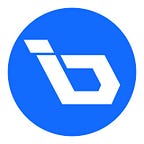Tokens buy-backs and tokens burns.
Many companies in conventional markets have often benefited from the share repurchase program. Those operators usually decide to repurchase part of the shares when they have additional cash. Where such a decision takes place on the market, it generally raises the share price while limiting the supply of available shares — this is ideal for all investors — because it leads to an increase in the value of the shares. Indeed, the repurchase program supports long-term price stability and the increase in the value of tokens.
Redemption and burnout, in turn, is a process specific to digital assets such as cryptocurrencies, but it should be noted that the idea is the same as for repurchase programs in traditional markets. The issuer buys back and then burns previously issued tokens on the market to reduce their supply while increasing the unit market price of those tokens. This system can be compared with the process of dividend payments, but it is also the case that during both repurchase and repurchase with the burning of tokens, investors are not directly gratified in any way (they can expect an increase in the value of tokens); dividends, on the other hand, take the form of payment in the form of fiat currencies. It is worth noting that most retail investors buy-out with burnout also entails tax benefits.
In the current market environment, price volatility in cryptocurrency markets is very high. In order to attract investors, issuers must formulate a functional, clear, stable and profitable proposal on the value offered, which will further operate in the digital ecosystem. The issuer benefits from this buy-backs and burning system in several ways. Firstly, they support the growth and stability of the value of tokens traded on exchanges. Secondly, the token is more attractive to investors, attracting an increasing number of them. Thirdly, there is an increase in liquidity as demand on the secondary market increases with a reduced supply at the same time. Fourthly, buybacks and burning encourage long-term investors to hold tokens, further increasing price stability and reducing supply on the secondary market.
The buy-back and burn program is effective, as can be shown by the example of the largest currently functioning cryptocurrency exchange in the world — Binance. Binance Cryptocurrency Exchange Token (BNB) uses this program to allocate a large part of its profits for this purpose. In each quarter, tokens are burned, which is reduced for their overall supply in circulation; in essence, such actions of the company can be compared to reverse mini-halving. Binance’s exit from their own token and BNB will continue until half of all tokens contracted are burned.
